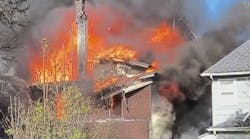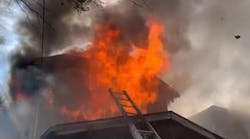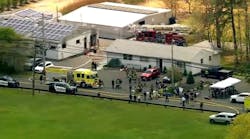Have you ever asked firefighters these questions: Do you use your thermal imager (TI) on every call? Do you use your TI for size-up? Do you use your TI for suppression and victim search and rescue? When do you use your TI?” Their reply likely might be, “Only during overhaul.” What we can learn from their answers is that this critical firefighting tool might be sitting inside the apparatus, not serving its purpose to aid firefighters responding to a variety of calls.
A perfect example is a dispatch for a structural fire. Upon arriving on scene, firefighters quickly exit their apparatus and begin sizing up the emergency. Five minutes go by before the officer radios for someone to grab the TI off the apparatus. Why was the TI still on the truck?
We have seen over the last five years how quickly thermal imaging technology is evolving. Today’s TIs are smaller, lighter and equipped with advances in infrared engine technology and image quality, and they are now much more affordable. Just like radios and flashlights, a TI is an extremely useful and sophisticated tool that needs to be used on every call.
When a TI is used in emergency incidents—including search and rescue, wildland firefighting, scene assessment, overhaul, motor vehicle incidents, fire attack and size-up—it helps firefighters quickly, safely and efficiently observe the emergency. With the TI being left on the apparatus, firefighters do not become familiar with using this tool. That lack of training puts them at risk when they do choose to use the TI in an emergency. It is important for firefighters to learn the limitations of the TI so that misreads and mishaps can be avoided. This awareness can only come with consistent and frequent use.
TI limitations
A TI does not see through buildings or people. It cannot see through walls, floors or obstructions to find victims. Infrared energy does not travel well through glass or water. While glass is transparent to visible light, it is nearly opaque to infrared. The same is true with water. During exterior size-up efforts, a TI cannot be used to see through closed windows. And it can only assist water rescues if the victim maintains a heat signature above the water line.
Thirty years ago, firefighters crawled while in a burning, smoke-filled structure. Today, when using a TI, firefighters might feel safe enough to navigate a structure on foot, not realizing that certain hazards are difficult to detect using a thermal imager. For instance, a hole in the floor might look like a puddle of water through the lens. Firefighters need to remember that when using a TI, they are not getting the same perspective as they would get with their eyes. Depth perception and peripheral vision are reduced with a TI. Firefighters should never forget their basic training and always remember to stay low and crawl, even when using a TI.
It’s also important to remind firefighters that temperature is relative on a TI, which simply displays temperature differences. The warmest thing in any field of view is generally white, while the coolest object is generally black. The temperature of a person remains fairly constant. In an ambient environment, a person is generally warmer, and therefore appears white. In a structure fire, however, a victim may be cooler than the ambient temperature and would appear dark grey or even black on the TI. When training with a TI, firefighters should concentrate on the shape of the image on the screen and not necessarily on the color.
Don’t leave it behind
By leaving the TI on the apparatus, firefighters are not getting the proper experience or training with their device. This puts firefighters at greater risk. Thermal imagers help save lives, but the key to successfully using them is to consistently use them in ALL scenarios. A thermal imager is a valuable tool in a firefighter’s toolbox, but it is important to always remember that it has limitations. The more you use it, the more proficient and aware you will become of what it can and cannot do.






